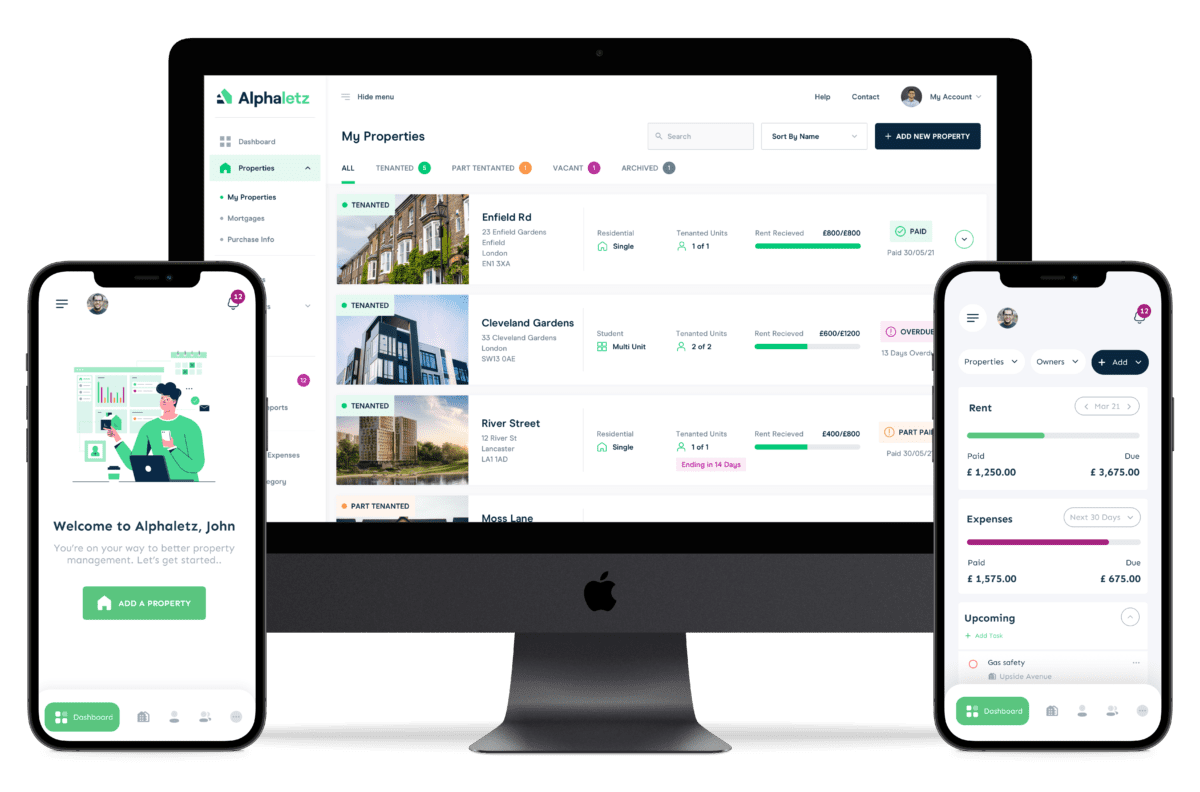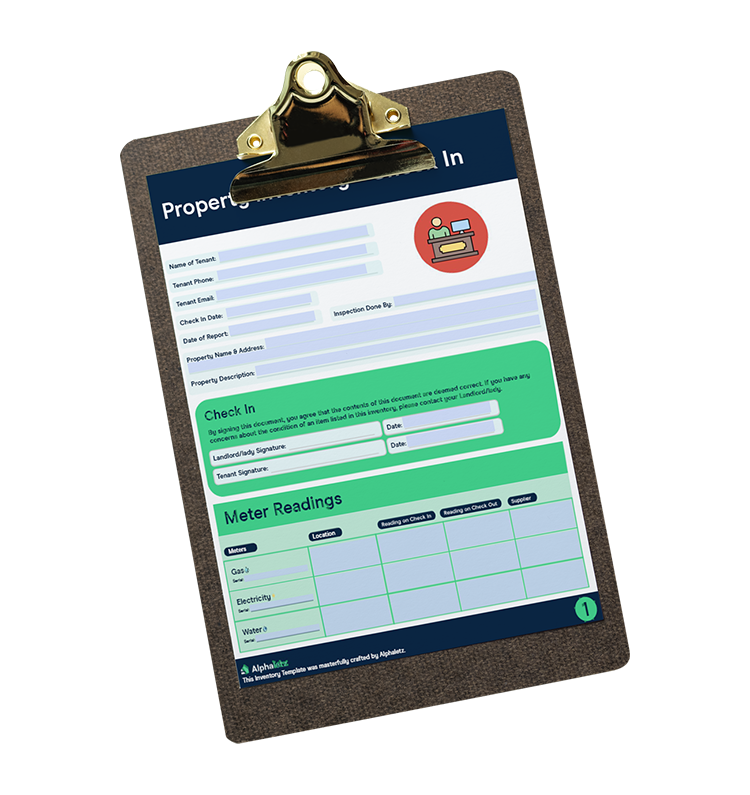Experiencing theft or burglary is bad enough if you’re just renting a property, but as a Landlord, theft or burglary can leave you at an even greater loss.
It can make your tenants feel insecure or afraid in their own home, forcing them to move out. This ultimately leaves you out of pocket and paying the price for someone else’s actions. Frustrating, right?
To add to this, if entry was forced, you might find yourself paying to replace doors, locks and windows, adding to an already inconvenient bill.
It’s important to know how to protect your home from burglary as a Landlord, and best practices to minimise damage in the event of misfortune.
So, without further ado, here’s the full guide to protecting your property from theft.

Secure Your Property
This is probably a no brainer, but the best way to avoid theft and burglary is to put deterrents and safety measures in place to scare off and prevent any would-be perpetrators.
There are a few ways you can do this…
Educate Your Tenants
One of your tenants is so excited to go on holiday next week. Her only downfall is that she’s been plastering it all over Facebook and Twitter for the last 2 weeks, letting any potential criminals know when the property is going to be vacant.
So educate your tenants on best practices. Things like posting holiday pictures on social media & turning all the lights off when they’re not home are indicators that potential burglars or thieves look for.
Install Security Systems
Motion detected exterior lights, Ring door cameras, deadbolt locks & burglar alarms are relatively cheap & highly effective at deterring break ins.
Most thieves & burglars are opportunists, so making unwanted access to the property harder than it needs to be is a great way to scare off criminals.
Don't Leave Valuables on Display
Leaving an expensive Macbook on a window ledge is an easy payday for most burglars, and by the time you’ve reacted to the loud shatter of broken glass, your perpetrator is long gone.
Leave valuables out of sight, especially if you’re not home.
Regularly Perform Inspections
Making sure that your property is in good order is a fantastic way to protect your investment.
A good, thorough property inspection can help shed light on potential security issues or bad tenant practices that could lead to misfortune.
If you’re not 100% on what you should be checking on, you can download our free property inspection checklist.
It’s masterfully crafted & packed full of detail so you don’t miss any important parts of a property inspection.
Something to Remember
Unfortunately, not all incidents of theft are committed by hardened burglars. There are a small portion of tenants who do steal property, especially when moving out.
You might’ve noticed a missing lampshade and questioned whether it was you or the tenant who purchased it.

This is why it’s best to have an Inventory Checklist that you can fill out when the tenant moves in, and once more when the tenant is leaving.
This way, you’ll be able to make a note that it was in fact you who bought the lovely purple lampshade before the tenant moved in, which has now consequently gone missing.
Choosing the Right Tenants
To avoid the above, it’s equally as important that you screen and qualify the right tenants before giving them access to your investment.
If you’ve no clue what questions you need to be asking, we’ve made it simpler than ever before (luckily for you!) with our free renters application form template.
Recovering from Theft
Theft or a break in can be scary, upsetting and in some cases, traumatic. As a property owner, it can leave you considering whether you should keep that property or not.
Especially if the crime was done by one of your own tenants, it can especially leave you questioning whether tenants are good people or not.
Luckily, only a very small percentage of tenants do this, so don’t lose hope.

Make sure, first of all, that you report the crime to your local authorities. Your insurance will need evidence that you have logged this with the police.
More importantly, if you have lost any possessions from the theft/break in, the police might be able to recover them if the criminal is caught in a timely manner.
Insurance
One of the best ways to recover from theft or a break in is by taking out the right insurance to begin with.
Unfortunately, a large portion of Landlords don’t value the importance of insurance until it’s too late.
It’s better to have it and not need it, than to not have it.
Fortunately, we’ve teamed up with Alan Boswell who provide complete Landlord Contents Insurance. Cover furniture, appliances & fixtures with total peace of mind. Click here to get a free quote.
Inventory
One essential way of ensuring your furniture & white goods are protected from tenant theft is by using an inventory checklist.
Not only does an inventory help accurately record the condition of your property, it can also provide concrete proof of damage or theft committed by tenants.

What is an Inventory?
A rental property inventory is a document that traditionally used to record the condition of things like walls, ceilings, furniture, blinds and so forth.
Typically, an inventory is performed prior to the tenant moving in and once more when the tenant is planning to move out to compare the condition and presence of goods that belong to you.
Purpose of a Landlord Inventory
Your tenant is moving out soon and a property inspection has revealed a massive tear in the living room sofa. Your tenant swears blind that it was there when they moved in.
However… By using an inventory, you’ve accurately recorded the condition of the sofa and you’ve even taken a photo too.

Congratulations!
You’ve been able to potentially save a couple thousand pounds on buying a new sofa and your tenant, when faced with the evidence, has owned up to it.
Without that inventory, there would’ve been no concrete proof that the sofa wasn’t damaged when they moved in, and any disputes regarding the deposit could’ve worked in the tenant’s favour.
What Should Be Included?
An inventory typically records the condition of white goods, furniture, fixtures & other amenities, such as…
- Doors (Internal & External.)
- Flooring
- Walls, Ceiling & Skirting Boards.
- Windows, Curtains & Blinds.
- Light Fixtures.
- Sockets & Switches.
- Cabinets, Worktops, Hobs & Extractors.
- Sinks & Taps.
- Radiators.
- Stairs & Bannisters.
- Fireplaces.
- Much More.
Make Sure Your Tenant Agrees
When you fill out an inventory report, you’ll want to make sure that a tenant agrees on the conditions you’ve recorded so there’s no disputes later down the line.
So when performing the inventory, make sure your tenant signs off on it. If there’s any disputes, correct your inventory report and get your tenant’s signature once more.
What do I do with a Completed Inventory Document?




